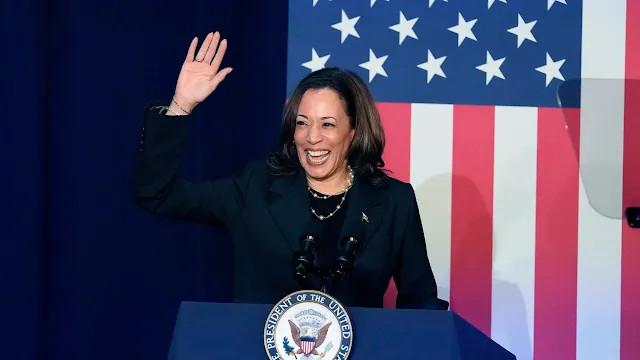In a strategic move to capture swing-state voters, Vice President Kamala Harris is set to embark on a seven-state campaign blitz, giving her a much more rigorous travel schedule compared to her opponent, former President Donald Trump. This ambitious tour, starting Tuesday, marks a critical phase in her campaign, with only three months left until Election Day. Notably, this will be the first time Harris will appear with her yet-to-be-announced running mate.
The campaign trail will see Harris covering significant ground over five days, one of the heaviest weeks of campaign travel in the general election. Her itinerary includes visits to five states that she and President Joe Biden successfully turned blue in 2020: Pennsylvania, Wisconsin, Michigan, Georgia, and Arizona. Additionally, she will make stops in North Carolina, narrowly lost by Biden, and Nevada, where Democrats won by a slim margin.
The Contenders for Vice President
Harris' team has been meticulously vetting six potential candidates for her running mate. The contenders include:
- Kentucky Governor Andy Beshear
- Transportation Secretary Pete Buttigieg
- Senator Mark Kelly of Arizona
- Illinois Governor JB Pritzker
- Pennsylvania Governor Josh Shapiro
- Minnesota Governor Tim Walz
Over the weekend, Harris held separate meetings with Walz, Shapiro, and Kelly, signaling the imminent announcement of her vice-presidential pick.
Kicking Off in Philadelphia
Harris will kick off her cross-country tour in Philadelphia alongside her chosen running mate. This marks the beginning of a high-energy campaign sprint aimed at solidifying voter support and building momentum leading up to the election.
Contrasting Campaign Styles
Harris’ travel schedule starkly contrasts with the pace of Trump and Biden. Since the June 27 debate, Trump has made appearances in ten states, while Biden visited eight states in the final 24 days of his candidacy. Harris, on the other hand, is set to cover seven states in just five days, highlighting her vigorous approach to the campaign.
Generational Gap in the Campaign
The difference in campaign activity also underscores the generational gap between Harris and her opponents. At 59, Harris is significantly younger than Trump, 78, and Biden, 81. Democratic allies emphasize that this age difference allows Harris to commit to intense campaign trips, which might be more challenging for her older counterparts.
Amanda Renteria, who served as the national political director for Hillary Clinton’s 2016 campaign, pointed out the impact of age on a candidate’s ability to sustain long campaign trips. "Age really does matter," she said, referring to the demanding nature of campaigning. The ability to maintain such a pace is seen as a potential advantage for Harris in connecting with voters across multiple states.
Trump's Campaign Plans
In comparison, Trump’s schedule for the week is relatively light. He plans to hold a rally on Friday and deliver remarks at a dinner in Montana, followed by a fundraiser in Colorado on Saturday. Neither state is considered a swing state, indicating a more conservative approach to his campaign activities.
The Road Ahead
As Harris embarks on this whirlwind tour, all eyes will be on her interactions with voters and the official unveiling of her vice-presidential pick. This campaign blitz is not just a demonstration of her stamina and dedication but also a pivotal opportunity to strengthen her presence in key battleground states.
Harris' dynamic campaign strategy highlights the contrast between the candidates and sets the stage for an intense final stretch leading up to Election Day. As she introduces herself to more voters and makes her case for the presidency, the upcoming week will be a critical chapter in her campaign journe









